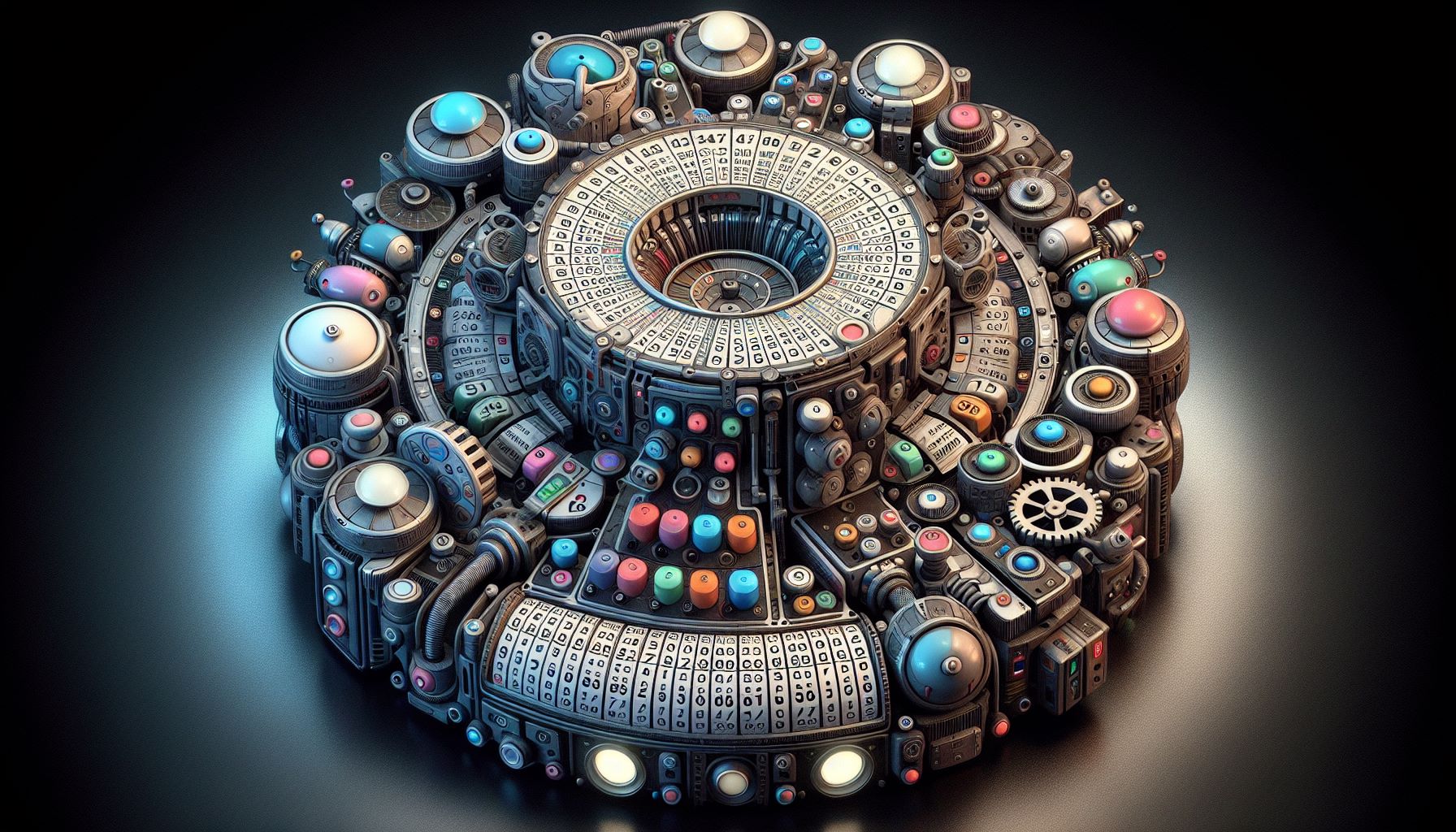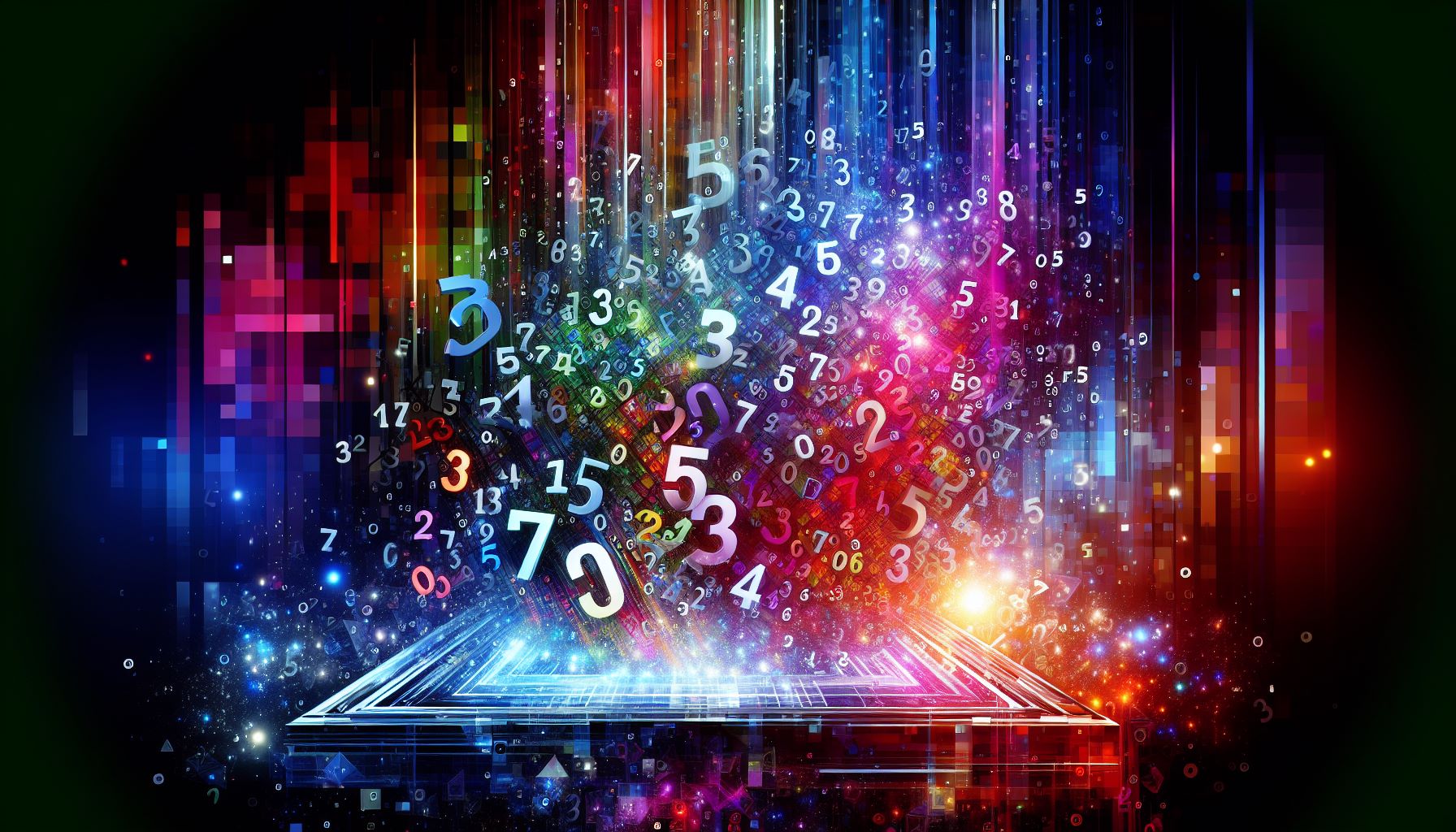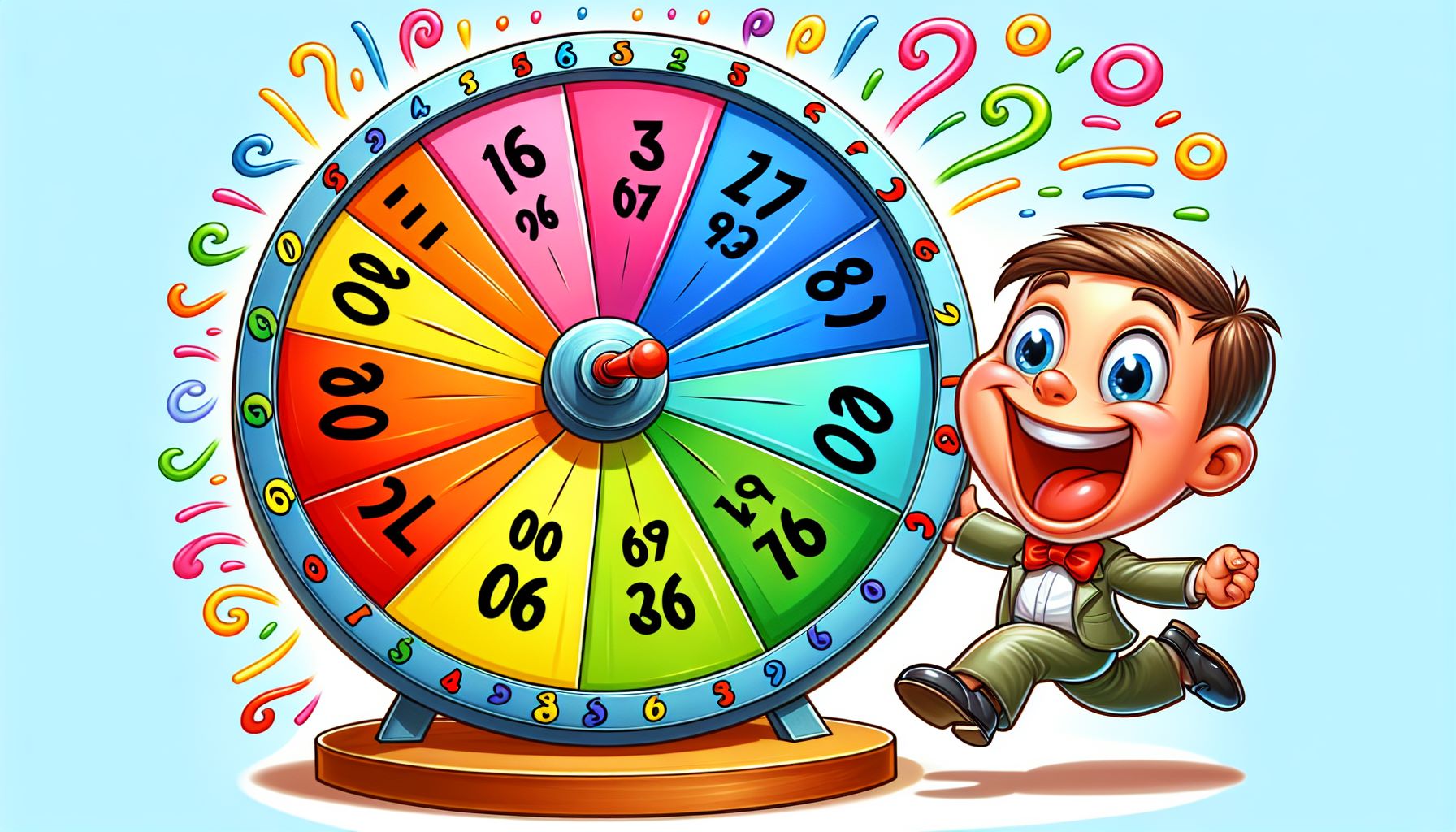Random Number Generator
The Random Number Generator tool generates random numbers within a specified range, providing reliable and unbiased results. This tool is perfect for developers, statisticians, and anyone needing random numbers for simulations, games, or decision-making processes. The process is straightforward, allowing you to quickly generate random numbers tailored to your specific requirements.
Share on Social Media:
Effortless Randomness: Your Ultimate Guide to Using a Random Number Generator
Wondering how to randomly select a number for your project or decision-making process? A Random Number Generator (RNG) solves this by providing quick, random results. Whether you need a number for a game, a secure password, or a scientific simulation, this article sheds light on using a reliable RNG. We cover Pseudo-random (PRNGs) and True Random Number Generators (TRNGs), ensuring you find the right type of randomness.
Key Takeaways
Random Number Generators (RNGs) are divided into two main types: Pseudo-random Number Generators (PRNGs) that use algorithms, and True Random Number Generators (TRNGs) that use physical processes for generating numbers, each serving different needs in various applications.
RNGs are integral in fields such as gaming, machine learning, cryptography, and data science, where they contribute to realism, train algorithms, secure data, and provide unbiased samples for statistical analysis, with their quality assessed by statistical tests.
RNG technologies offer advanced features and user-customizable options, allowing for the generation of random numbers within set parameters, ensuring uniqueness and tailoring to specific distribution and visual preference requirements, and continually evolving through user feedback and expert debates.
Discovering Random Number Generators

RNGs have been the cornerstone of randomness in digital spaces for decades. PRNGs and TRNGs are the two main types of RNGs. PRNGs are Pseudo-random Number Generators, while TRNGs are True Random Number Generators. PRNGs are software algorithms that simulate true randomness, producing sequences of numbers that satisfy certain statistical requirements for randomness. On the other hand, TRNGs are hardware devices that use physical processes, like electronic or quantum phenomena, to generate unpredictable and unique numbers.
The evolution of RNGs is a testament to the relentless pursuit of better and more reliable randomness. User feedback and insights have played a pivotal role in this process, highlighting limitations and driving innovations to address different needs. The development of both PRNGs and TRNGs was a response to these insights, each catering to specific demands for randomness in different applications.
Random Number Generator by PagesTools.com
At PagesTools.com, we provide an online Random Number Generator that allows you to generate random numbers with ease. Our tool lets you set lower and upper limits and choose between generating integers or decimal results, giving you the flexibility to tailor the output to your specific needs.
Our commitment to effortless randomness goes beyond the convenience of number generation. We strive to make the process intuitive, transparent, and customizable, providing you with a pseudo random number generator tool that truly understands your needs and adapts to them. In addition, our true random number generator ensures the highest level of unpredictability.
Pseudo vs. True: Understanding RNG Types
PRNGs and TRNGs, while both generators of random numbers, have significant differences. PRNGs use mathematical formulas or pre-calculated tables to produce sequences of numbers. However, these numbers, while statistically random, are not completely random due to their algorithmic generation. In contrast, TRNGs produce randomness based on physical attributes, offering unpredictability and enhancing security for applications like generating seed tokens.
While PRNGs are fast and allow for repeatable results, TRNGs have the advantage of genuine randomness that cannot be replicated. This makes TRNGs particularly valuable in applications that require high levels of security and unpredictability. Understanding these differences is crucial in choosing the right RNG for your specific needs.
RNG Applications: Where Numbers Come to Life
RNGs are not just about generating numbers; they are about bringing numbers to life in various applications. In gaming, for example, PRNGs enhance realism in graphics and gameplay by generating unpredictable elements like damage ranges and procedurally generated worlds. They simulate basic randomized mechanisms, such as dice rolls or coin flips, serving as foundations for many games and entertainment applications.
But the scope of RNGs extends beyond gaming. They play a significant role in machine learning, particularly in domain randomization, where random inputs help train more robust algorithms through diverse simulations. Furthermore, RNGs are critical in the field of cryptography for securing data, leading to the development of specialized RNG circuits based on thermal noise in resistors.
Crafting Your Numbers: How to Generate Random Numbers

Generating random numbers is not just about clicking a button; it’s about crafting numbers that suit your requirements. To pick a truly random number between two numbers, you need to enter these numbers as the range and press ‘Get Random Number’. You can generate more than one random number by selecting the desired quantity from a drop-down menu within the specified min-max range.
The process behind the generation of these random numbers is fascinating. Computer-generated random numbers use inputs such as system time and environmental variables to produce sequences that resemble true randomness. This underlying complexity ensures that the numbers you generate are not purely arbitrary but a product of intricate processes that mimic randomness.
Setting Your Limits: Range and Values
In the world of RNGs, you have the power to set your limits. You can choose a minimum number and maximum number to define the range from which random numbers will be selected. This allows you to control the spectrum of your randomness, ensuring that the numbers generated are within your desired range.
Moreover, RNGs can be set up to produce both positive or negative numbers within the determined range, providing you with additional flexibility in number generation. Whether you need a sequence of numbers for a statistical simulation or unique identifiers for a database, setting your range and values is a critical step in crafting your numbers.
Ensuring Uniqueness: Avoiding Repeat Values
When it comes to RNGs, uniqueness is a valuable attribute. To prevent duplicates in generated sequences, you can enable the option in the random number generator to disallow repeats, ensuring all numbers produced are unique. This function is particularly useful in scenarios requiring strict uniqueness, such as lottery drawings or assigning unique identifiers.
Moreover, the set of generated random integers can be shuffled to add an extra layer of randomization. This helps to further prevent the possibility of repeat values in subsequent number generation tasks, ensuring that your RNG sequences remain as unpredictable as possible.
The Role of Randomness in Data and Simulations
Randomness is more than just an abstract concept; it plays a pivotal role in data science and simulations. It is essential for:
creating sequences of numbers that are crucial for modeling complex systems
running simulations
enabling unbiased sampling and hypothesis testing in statistical analysis
RNGs have a significant role in data science and are fundamental tools in the field.
Generating high-quality random numbers is crucial to ensuring that these numbers adequately resemble true randomness. They should exhibit properties such as uniform distribution and independence. To assess the randomness of generated numbers, they are evaluated through uniformity measures and various statistical tests, including Marsaglia’s birthday test, permutation tests, Kolmogorov-Smirnov, and Anderson-Darling tests. These assessments guide further enhancements in RNG technologies, ensuring that the randomness we rely on remains reliable.
A Closer Look at Number Picker Tools
Number picker tools are the interfaces that bring RNGs to life. They provide features that allow you to sort the random numbers generated in ascending or descending order according to your preference. For logged-in users, additional benefits such as file storage within the Number Picker Wheel enhance the user experience and data management capabilities.
However, it’s important to understand how your data is managed. For instance, cleaning your browser’s history could result in a loss of data. Similarly, refreshing the page may lead to the loss of data for non-active wheels, which is a crucial consideration for maintaining the selection states. Understanding these aspects is key to effectively using number picker tools and preserving your data.
Spinning the Wheel: Interactive Number Pickers

Interactive number pickers like the random number picker, Number Picker Wheel, add a touch of fun to the RNG process. This tool allows users to randomly select a random number by:
Spinning the wheel, much like a game of roulette
Picking the desired number of digits
Setting the range of digits
Enabling automatic spinning or resetting the digits
The Number Picker Wheel is not just a tool; it’s an engaging experience. It’s practical for randomizing giveaways, where each participant is assigned a unique number. Once the number chosen, the wheel also provides an ‘elimination mode’, which removes selected results to ensure each number is unique and non-repeating.
And if you want to share your results, you can download them as a picture, making saving and sharing easy with the following settings.
From Dice to Decisions: RNGs Beyond Numbers

RNGs are not limited to numbers; they can randomize inputs beyond numbers, such as:
alphabet letters
symbols
colors
words
images
Whether you need to create a random password, generate a unique identifier, or simply want to add an element of randomness to your project, RNGs can generate a wide array of random inputs.
By extending the capabilities of RNGs beyond numbers, we open up a world of possibilities. Some potential applications include:
Randomizing the letters of an alphabet
Generating unique sequences of symbols
Creating random passwords
Simulating random events in games or simulations
Generating random test data for software testing
This versatility is what makes RNGs such powerful tools in the digital realm.
Advanced Features of RNGs
As RNG technologies have evolved, they have incorporated advanced features to enhance their capabilities. Simple ratio transformations, for example, are applied to RNGs to enhance their statistical properties, turning moderately good RNGs into statistically excellent ones. Empirical tests such as Crush and Big Crush have shown that ratio transformations significantly reduce the number of failed tests by RNGs, indicating a marked improvement in performance.
One such advanced feature is the Box-Muller transform, which is used to derive normally distributed numbers from RNGs that provide uniform random numbers. This transformation allows RNGs to generate numbers that follow a specific distribution, broadening the scope of their application. These advancements in RNG technologies not only enhance the quality of random numbers generated but also expand the range of potential applications.
Atmospheric Noise: The Sound of Randomness

True RNGs harness the power of natural phenomena to create randomness. One such phenomenon is atmospheric noise, an external, non-computer program source that provides inherent randomness due to its consistently changing complex behavior. This noise, originating from lightning discharges, can be captured using radio equipment tuned to static channels, enabling the extraction of random bits for number generation.
By tapping into the randomness of atmospheric noise, RNGs can generate numbers that are truly random, unpredictable, and unique. This enhances the security of the RNG, making it ideal for applications that require high levels of unpredictability, such as cryptographic keys or security tokens.
Thermal Noise: Randomness from Heat
Another source of true randomness is thermal noise. This noise arises from the inherent random motion of electrons within a conductor as a result of heat. RNGs can exploit the randomness of thermal noise in resistors, generating truly random numbers using conventional CMOS technology.
By leveraging the randomness inherent in physical phenomena like thermal noise, RNGs can generate numbers that are truly random, enhancing the security and unpredictability of the numbers generated. This makes thermal noise-based RNGs particularly useful in applications that require high levels of security, such as cryptography and secure communications.
Customization and Preferences in RNGs
One of the key advantages of RNGs is their flexibility and customization options. Users can customize their random number generation by specifying the mean and standard deviation for a normal distribution, altering the clustering of numbers produced. This allows users to tailor the RNG to their specific requirements, whether they need numbers that are evenly distributed or numbers that cluster around a specific value.
Moreover, users can also customize the visual aspects of RNGs. For example, they can alter the text color for number picker tools, creating a personalized and visually appealing RNG experience. These customization options allow users to create an RNG experience that is not only functional but also visually pleasing and personalized to their preferences.
Feedback and Improvement: The Evolution of RNGs
The evolution of RNGs is a story of continuous improvement and innovation, driven by user feedback and expert debates. User feedback and bug reports are essential forms of input for improving RNG tools, highlighting areas of improvement and driving innovation.
These discussions and feedback have fueled the continuous improvement of RNG practices in areas such as operating systems, programming languages, and security packages. This ongoing evolution ensures that RNG technologies continue to meet the growing demands of users, providing reliable, high-quality randomness for a wide array of applications.
Exploring Alternatives: Other Ways to Generate Randomness
While RNGs are powerful tools for generating randomness, they are not the only option. Users can employ their own formulas to create lists of random numbers tailored to specific requirements. These alternative methods provide additional flexibility, allowing users to generate randomness that is uniquely suited to their needs.
Whether you’re developing a game, conducting a statistical analysis, or securing data, it’s important to understand that there are multiple ways to generate randomness. By exploring these alternatives, you can find the method that best fits your requirements, giving you greater control over the randomness you create.
Summary
We’ve embarked on a journey through the world of RNGs, discovering their history, understanding their types, and exploring their applications. We’ve seen how RNGs bring numbers to life in gaming, machine learning, cryptography, and more. We’ve learned how to craft our numbers, set our limits, and ensure uniqueness. We’ve seen how RNGs harness atmospheric and thermal noise to generate true randomness. We’ve also witnessed the power of user feedback in driving the evolution of RNG technologies.
As we conclude our exploration, one thing is clear: RNGs are not just about generating numbers; they are about creating randomness that drives innovation and progress in countless fields. So, the next time you roll a virtual dice, secure a transaction, or train a machine learning algorithm, remember the magic of RNGs - the hidden power that makes our digital world unpredictable and exciting.
Frequently Asked Questions
What's the difference between a PRNG and a TRNG?
The main difference between a PRNG and a TRNG is that PRNGs are software algorithms that simulate randomness, while TRNGs are hardware devices that use physical processes to generate truly random numbers. It's important to understand this distinction to choose the right tool for your needs.
How do I generate a random number using an RNG tool?
To generate a random number using an RNG tool, simply enter your desired range and press 'Get Random Number'. You can also generate multiple random numbers at once within the specified range.
How can I ensure that my RNG values are unique?
To ensure that your RNG values are unique, enable the option in the random number generator to disallow repeats, preventing duplicates in generated sequences.
What is atmospheric noise, and how does it contribute to RNGs?
Atmospheric noise is an external source that adds true randomness to RNGs, making the generated numbers unpredictable and unique. This happens because the noise is consistently changing and complex in its behavior.
Can I customize my RNG experience?
Yes, you can customize your RNG experience by specifying distribution parameters, altering number clustering, and changing visual elements like text color for number pickers. This allows for a personalized and tailored random number generation experience.